Last updated on
Discover the pros and cons of installing hardwood floors under kitchen cabinets as we dive into this popular home improvement debate.
Hardwood floors are a popular choice for homeowners who want to create a warm, inviting atmosphere in their homes. But when it comes to kitchen renovations, many people wonder whether they should install hardwood flooring under their cabinets or not.
After all, cabinets can be heavy and difficult to move once they’re in place. So what’s the answer? Should you put hardwood floors under kitchen cabinets? In this article, we’ll explore the pros and cons of installing hardwood flooring under your kitchen cabinets and help you make an informed decision for your home renovation project.
What's Inside
Pros and Cons of Hardwood Floors Under Kitchen Cabinets
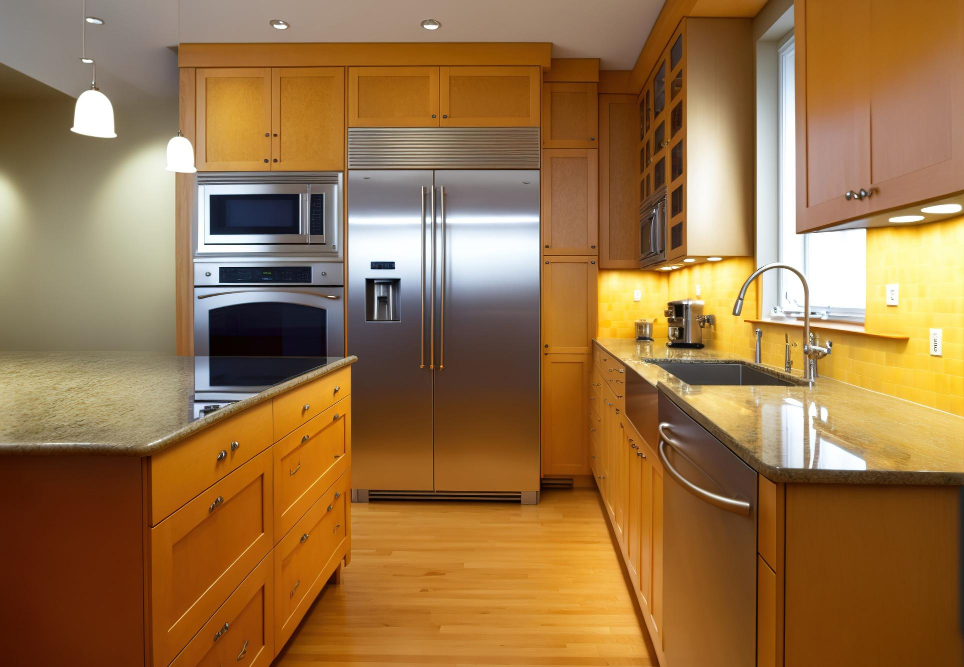
When it comes to installing hardwood floors in your kitchen, one of the biggest debates is whether or not to install them under your cabinets. Here are some pros and cons to consider:
Pros:
- A seamless look: Installing hardwood flooring before cabinets means that you’ll have a continuous flow throughout the room.
- Easier installation: It’s much easier to install flooring without having obstacles like cabinets in the way.
- Future flexibility: If you ever decide to change up your kitchen layout, having hardwood floors underneath makes it easier.
Cons:
- Potential damage during cabinet installation: There’s always a risk of damaging new flooring when heavy cabinetry is being installed on top.
- Extra cost for materials and labor: Installing wood under all cabinetry can add extra costs for both materials and labor.
- Maintenance challenges around appliances & plumbing fixtures – cleaning debris from tight spaces between floorboards may be difficult.
Hardwood Flooring Materials for Kitchens
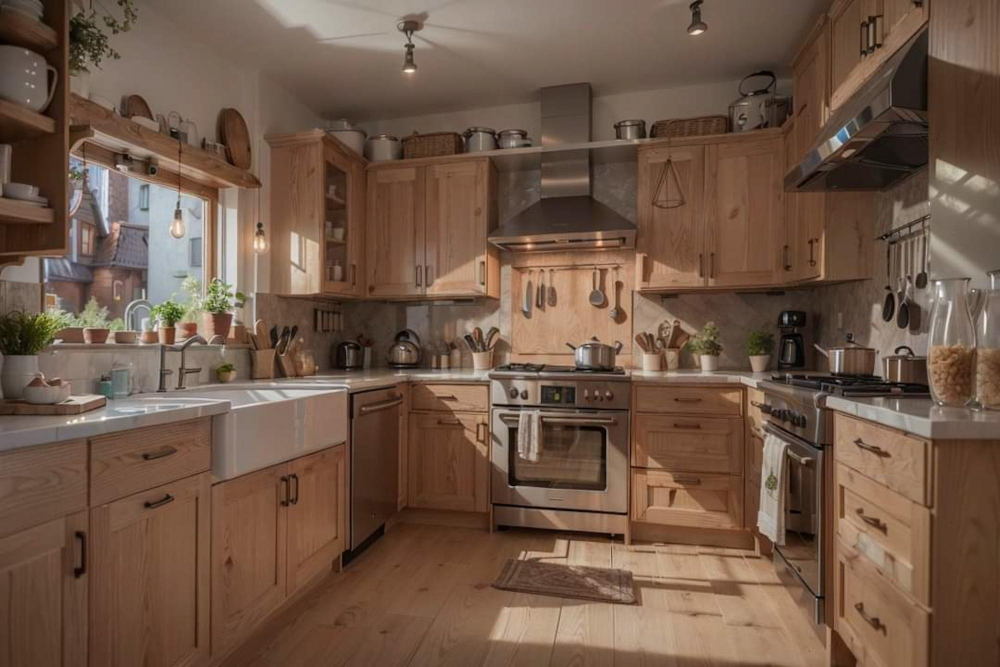
First and foremost, you want a durable wood that can withstand heavy foot traffic and spills. Oak is one of the most popular choices for kitchen floors because it’s hard-wearing and has an attractive grain pattern.
Another option is maple, which is also known for its durability but has a lighter color than oak. If you’re looking for something more exotic, Brazilian cherry or teak may be worth considering as they have natural oils that make them resistant to water damage.
It’s important to note that not all hardwoods are created equal when it comes to moisture resistance. Some woods like pine or fir may look beautiful in other parts of your home but aren’t suitable options in kitchens where spills happen frequently.
Ultimately, the best choice will depend on your personal style preferences as well as practical considerations such as budget and maintenance requirements.
Best Hardwood Flooring Types for Kitchens
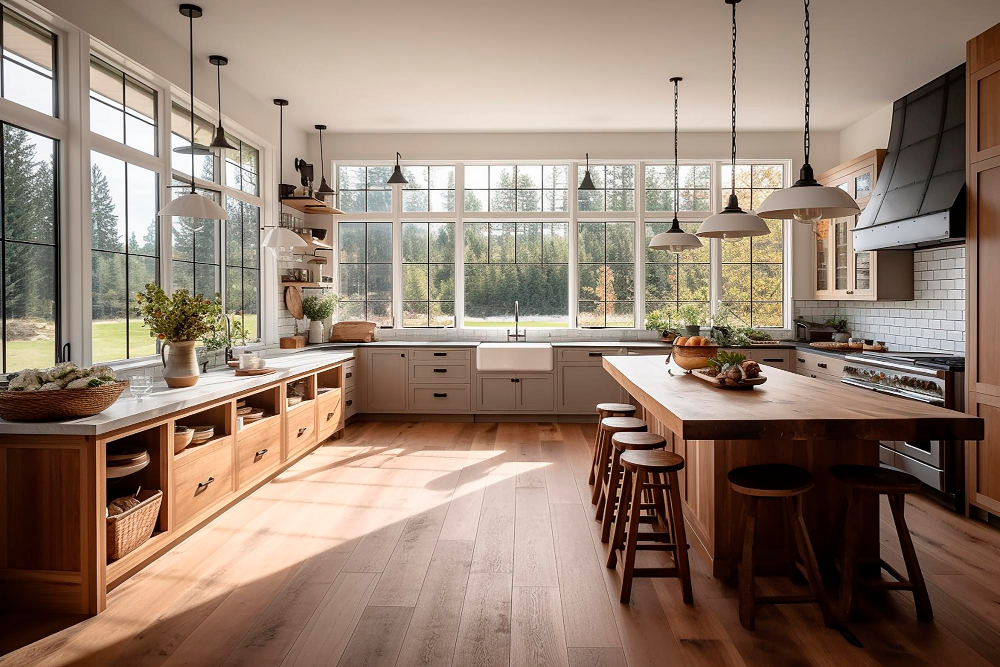
First and foremost, you want a durable wood that can withstand heavy foot traffic and spills. Oak is one of the most popular choices for kitchen floors because it’s hard-wearing and has an attractive grain pattern.
Another great option is maple, which is even harder than oak but has a more subtle grain pattern. If you’re looking for something with more character, hickory or cherry might be good options as they have unique color variations in their grains.
It’s also important to choose the right finish for your hardwood floors in the kitchen. A matte finish will help hide scratches and scuffs better than a glossy finish would while still providing protection against moisture damage.
Choosing the Right Hardwood Color
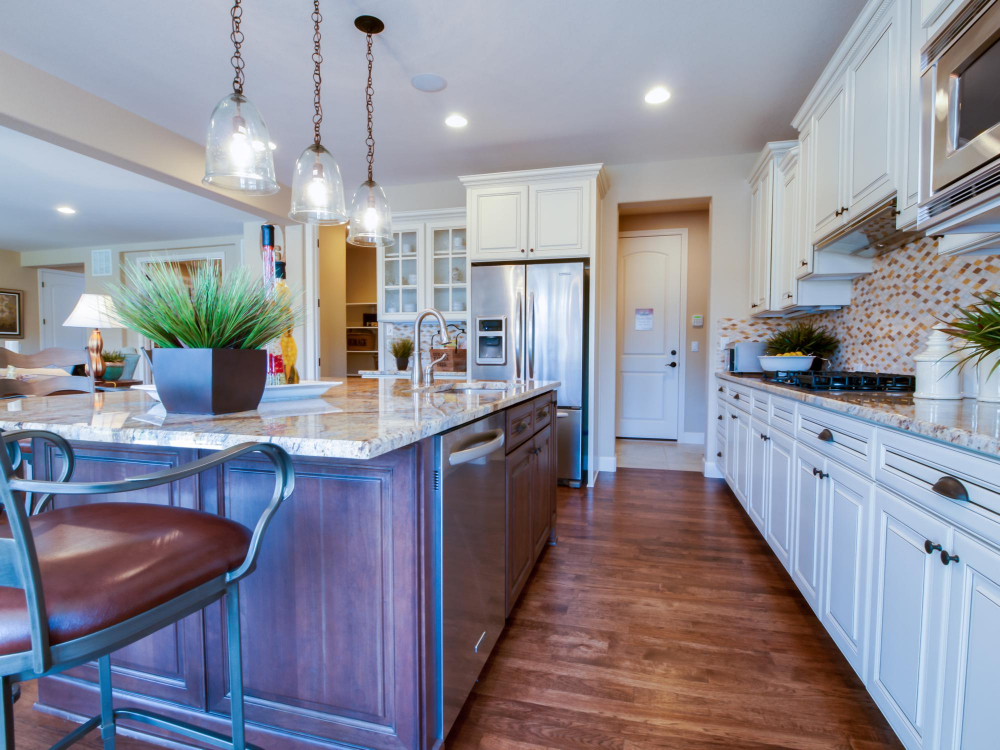
First and foremost, you want to choose a color that complements your cabinets and other kitchen decor. If you have dark cabinets, lighter hardwood floors can create an appealing contrast.
On the other hand, if you have light-colored cabinets or countertops, darker hardwood floors can add warmth and depth.
Another factor to consider is how much natural light your kitchen receives. If your space is naturally well-lit with plenty of windows or skylights, lighter colored flooring may be more suitable as it will reflect more light into the room making it appear brighter.
It’s also important not just to think about what looks good now but what will look good in years down the line when trends change; neutral colors like beige or gray tend not only work well with most cabinet styles but they’re also timeless options that won’t go out of style quickly.
Installation: Hardwood Before or After Cabinets
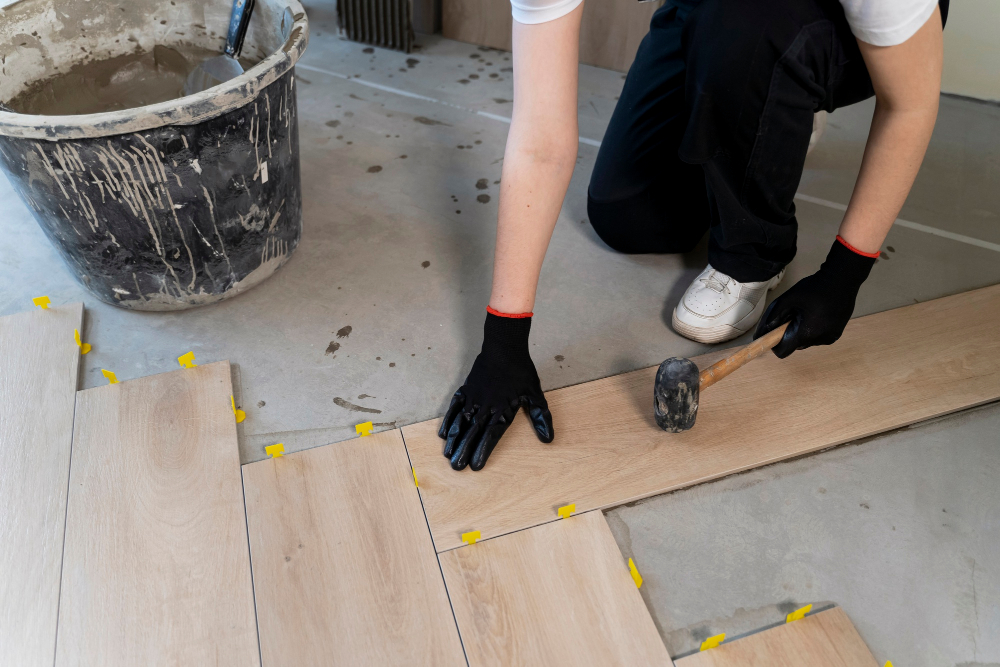
While there are pros and cons to both options, many experts recommend installing hardwood flooring before cabinets for several reasons.
Firstly, if you install the cabinets first and then try to fit the flooring around them, it can be difficult and time-consuming. You may end up with gaps between the floorboards or uneven edges that don’t look professional.
By contrast, when you install hardwood floors first, they can be cut precisely around any obstacles like cabinet bases or islands.
Another advantage of installing hardwood floors before kitchen cabinets is that it allows for more flexibility in design choices. If you decide later on that you want a different layout for your cabinetry or appliances (such as moving a refrigerator), having pre-existing flooring could limit those options.
Overall though there are some exceptions where installation should occur after cabinet placement such as floating wood floor installations which require an expansion gap left at all walls including under toe kicks so this would not work well with installed cabinetry already present.
Timing and Sequencing: Hardwood Floors and Kitchen Cabinets
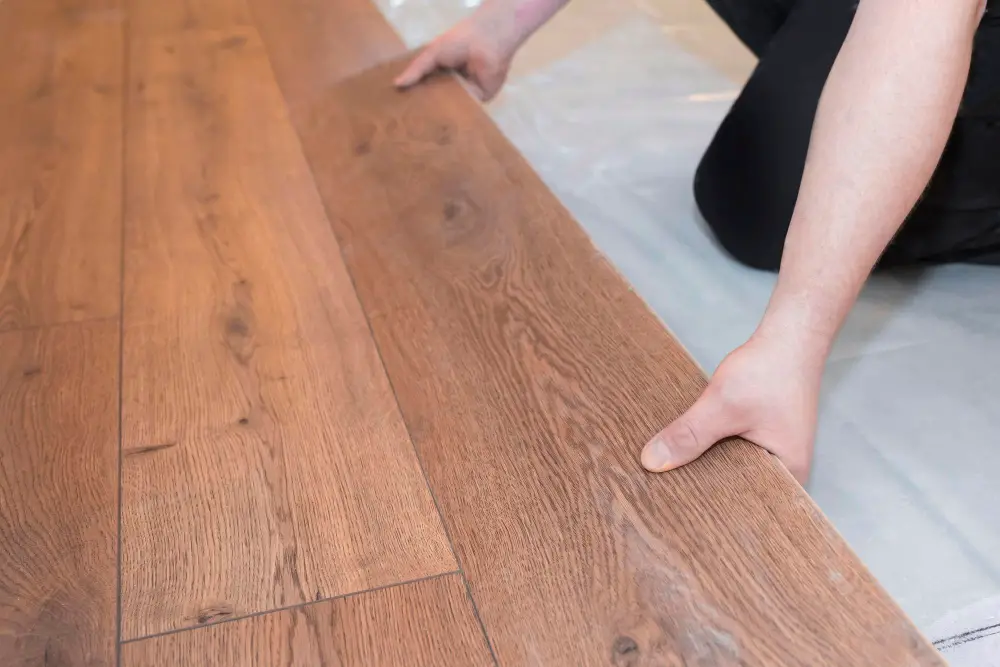
If you’re planning on installing hardwood floors and new cabinets, the order in which you do so can impact the overall outcome of your renovation project.
One school of thought is that hardwood flooring should be installed before kitchen cabinets. This allows for a seamless installation without any awkward cuts or transitions around cabinet bases.
It also ensures that if there are any issues with the subfloor or moisture levels, they can be addressed before cabinetry is put in place.
However, some contractors prefer to install cabinets first as it provides a level base for them to work from when installing flooring later on. If you plan on using floating hardwood floors (which don’t require glue or nails), then this method may work better since they need room at their edges for expansion and contraction due to temperature changes.
Impact of Hardwood Floors On Kitchen Cabinets

While some homeowners prefer the seamless appearance of hardwood flooring throughout their entire home, others worry about how it will affect their cabinetry.
One concern is that installing hardwood floors after cabinets are in place may cause issues with height differences between the floor and cabinet bases. This could lead to an uneven countertop or gaps between appliances and countertops.
On the other hand, if you choose to install your flooring before your cabinets, there’s always a risk that scratches or dents could occur during installation. If you decide to change out your cabinetry down the line but keep existing flooring in place, it may be difficult (or impossible) for new cabinets to fit properly over pre-existing wood planks.
Ultimately, whether or not you should put hardwood floors under kitchen cabinets depends on personal preference as well as practical considerations such as budget constraints and timing concerns during renovation projects.
Caring for Hardwood Floors in Kitchens
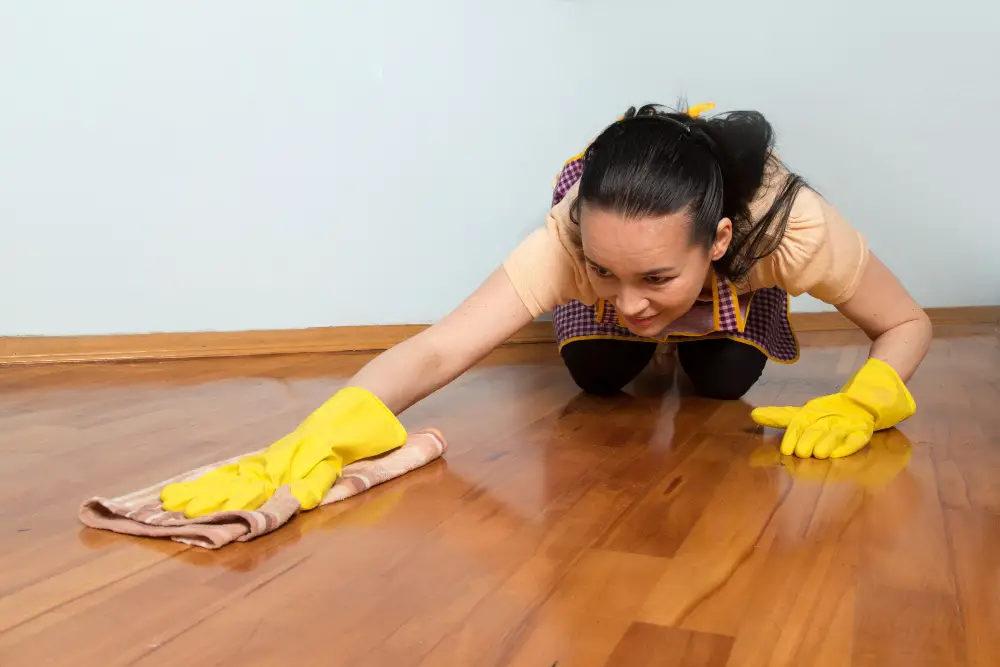
In a high-traffic area like the kitchen, spills and stains are inevitable. To prevent damage from moisture or scratches, be sure to clean up any spills immediately with a soft cloth or paper towel.
Avoid using harsh chemicals on your hardwood floors as they can strip away the finish and cause discoloration over time. Instead, use a gentle cleaner specifically designed for hardwood flooring.
Another way to protect your hardwood floors is by placing rugs or mats in high-traffic areas such as near the sink or stove. This will help prevent scratches from foot traffic and dropped utensils.
Regular maintenance is also key when caring for your kitchen’s hardwood flooring. Sweep daily with a soft-bristled broom or vacuum with an attachment that won’t scratch the surface of the floor.
Addressing Moisture Concerns in Kitchen Flooring
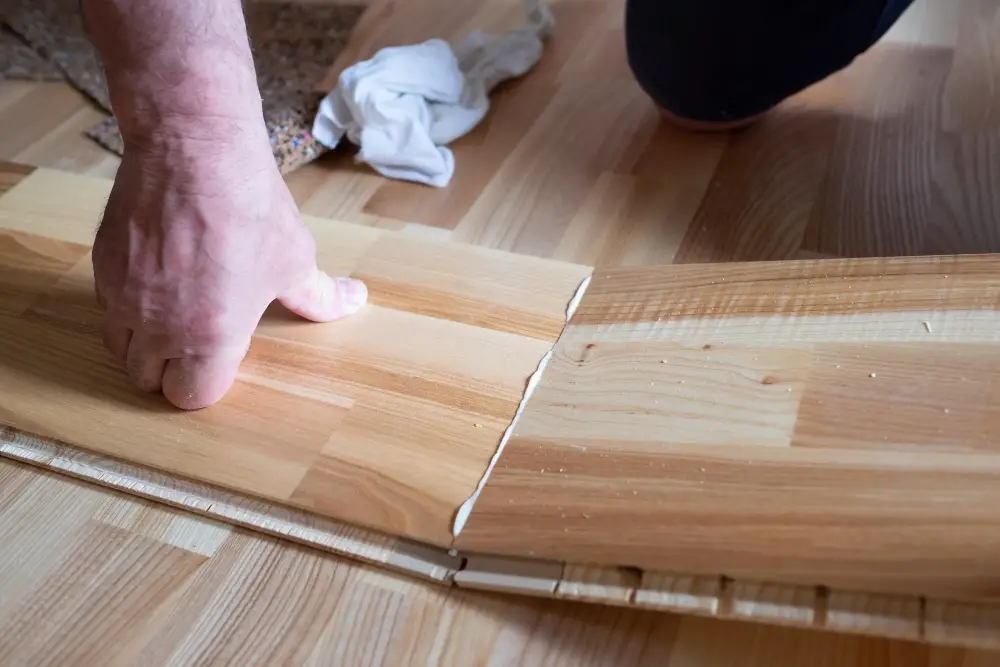
Hardwood floors are no exception. While hardwood is a durable material that can last for decades with proper care, it’s also susceptible to water damage if not properly maintained.
To address moisture concerns when installing hardwood floors under kitchen cabinets, there are several steps you can take:
1. Choose the right type of wood: Some types of hardwood are more resistant to moisture than others.
For example, oak and maple tend to be less porous than softer woods like pine or cherry.
2. Seal the wood: Applying a sealant or finish coat over your hardwood floor will help protect against water damage by creating an impermeable barrier between the wood surface and any liquids spilled on it.
3. Install vapor barriers: A vapor barrier installed beneath your new flooring will prevent excess humidity from seeping up through your subflooring into your new floorboards.
4. Keep an eye out for leaks: Regularly inspecting plumbing fixtures such as sinks or dishwashers for leaks will help you catch potential problems before they cause significant damage to both cabinets and flooring alike.
Impact of Water Damage On Hardwood Floors Under Cabinets
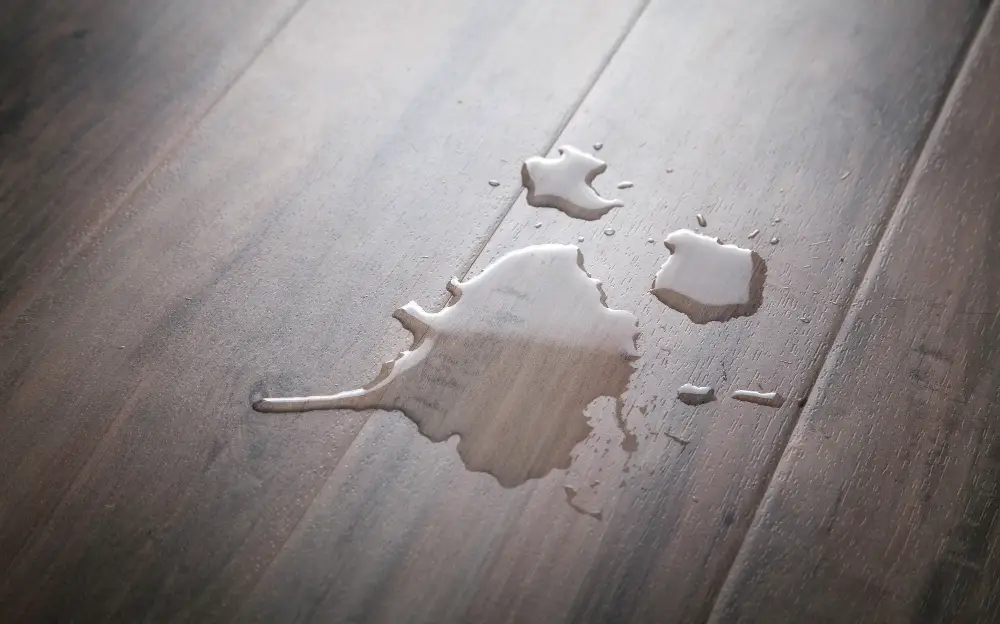
If you’re considering installing hardwood flooring under your kitchen cabinets, it’s important to understand the potential risks of water damage and how to prevent it.
When water seeps into the wood, it can cause warping, cupping or buckling. This can be especially problematic if your cabinets are installed on top of the hardwood floor because they may trap moisture underneath them.
To avoid this issue, make sure that any spills or leaks are cleaned up immediately and thoroughly. Use mats around sinks and appliances that use water such as dishwashers or refrigerators with ice makers to catch any drips before they reach the floor.
Consider using a sealant on your hardwood floors to help protect against moisture penetration. A professional installer will be able to recommend an appropriate sealant based on your specific type of wood flooring.
Tips for Matching Floors With Cabinets
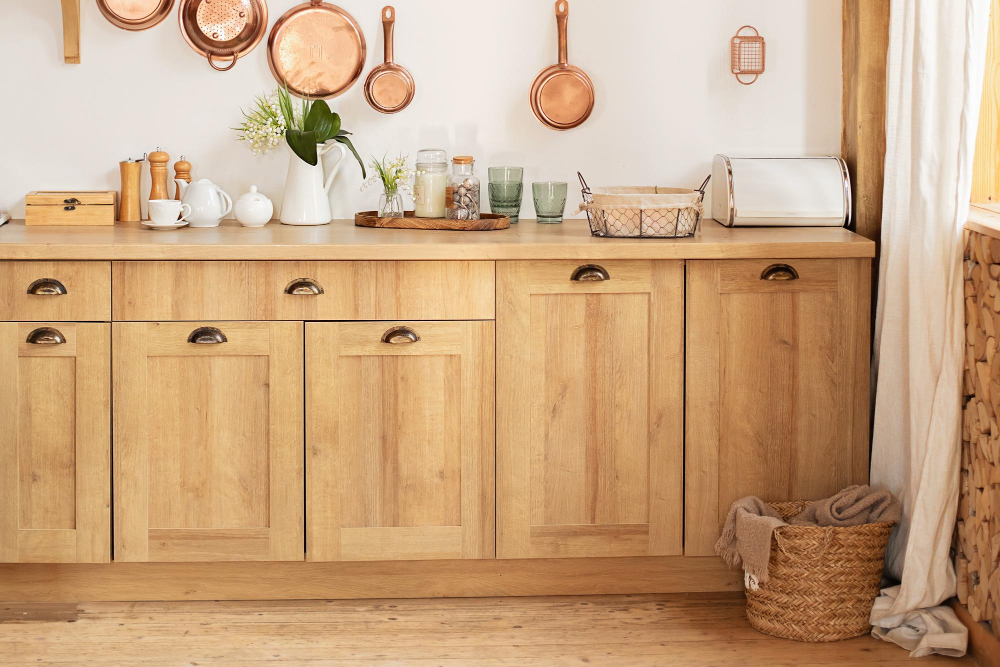
First and foremost, consider the overall style of your kitchen. If you have a traditional or classic-style kitchen, opt for warm-toned hardwoods like oak or cherry.
For modern kitchens with sleek cabinetry and clean lines, choose cooler-toned woods like maple or ash.
Another important factor is the color contrast between your flooring and cabinets. While it’s not necessary for them to match exactly (in fact, some contrast can add visual interest), they should complement each other well.
A good rule of thumb is to choose either lighter-colored floors with darker cabinets or vice versa.
Think about the size of your space when selecting flooring materials and cabinet colors. Lighter-colored woods can make small kitchens feel more spacious while darker tones can create a cozy atmosphere in larger spaces.
Hardwood Floor Maintenance in High-Traffic Areas
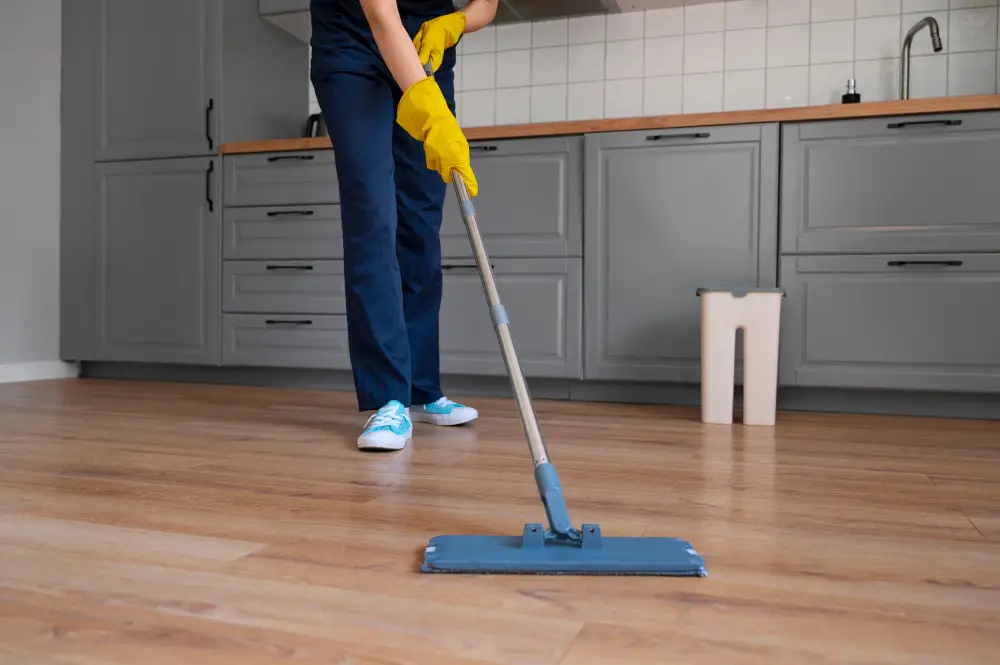
Regular cleaning and upkeep can help extend the life of your flooring and keep it looking beautiful for years to come. One important aspect of maintaining hardwood floors in high-traffic areas is protecting them from scratches and dents caused by foot traffic, furniture movement, or dropped objects.
To prevent scratches on your hardwood floor, consider placing rugs or mats in high-traffic areas such as near the sink or stove. These rugs will not only protect your flooring but also add a decorative touch to your kitchen decor.
Another way to maintain hardwood floors in high-traffic areas is by using protective pads under furniture legs. This will prevent scratching when moving chairs around during mealtime gatherings with family and friends.
Regular cleaning with a soft-bristled broom or vacuum cleaner can help remove dirt particles that may scratch the surface over time. Avoid using harsh chemicals that could damage the finish on your floorboards; instead opt for gentle cleaners specifically designed for use on wood surfaces.
Budget Considerations for Kitchen Hardwood Flooring

Hardwood flooring can be an expensive investment, but there are ways to make it more affordable. One option is to choose a less expensive hardwood species or opt for engineered hardwood flooring instead of solid wood planks.
Another way to save money on your kitchen renovation project is by installing the hardwood floors yourself if you have experience with DIY projects and feel confident in your abilities. However, keep in mind that improper installation can lead to costly repairs down the road.
If you’re working with a tight budget but still want the look of hardwood floors in your kitchen, consider using vinyl plank or laminate flooring that mimics the appearance of real wood at a fraction of the cost.
Floating Vs. Glued-Down Hardwood Installation
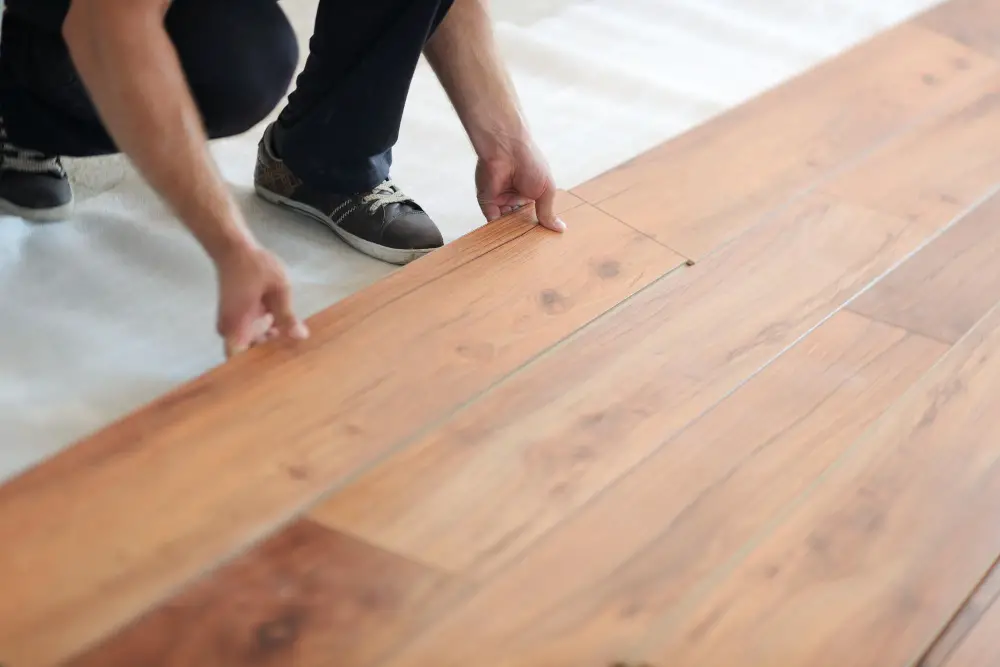
Floating floors are not attached to the subfloor but rather interlock with each other, creating a “floating” effect. Glued-down flooring is secured directly onto the subfloor using adhesive.
Floating hardwood floors have become increasingly popular in recent years due to their ease of installation and versatility. They can be installed over almost any type of existing flooring without requiring extensive preparation or demolition work.
This makes them an excellent choice for homeowners who want a quick and easy renovation project.
On the other hand, glued-down installations offer greater stability and durability than floating floors since they’re firmly anchored into place on the subflooring below. This method is particularly useful if you live in an area with high humidity levels or frequent temperature changes that could cause your floorboards to expand or contract over time.
Floating Hardwood Floors: The Exception to the Rule
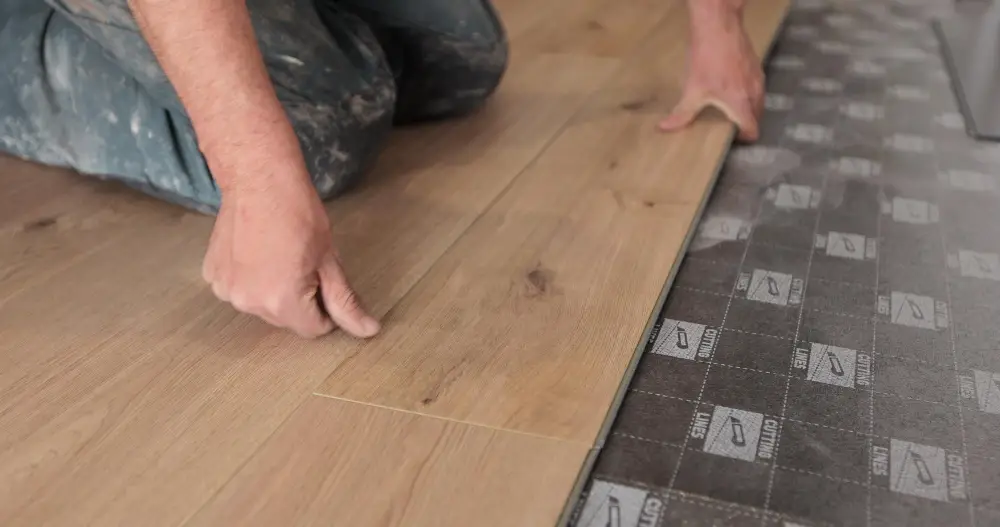
Unlike traditional hardwood flooring that is nailed or glued down, floating floors are designed to “float” on top of the subfloor without being attached. This makes them a great option for homeowners who want the look and feel of real wood in their kitchens but don’t want to deal with the hassle of removing and reinstalling their cabinets.
Floating hardwood floors come in a variety of materials, including engineered wood and laminate. They’re also available in different colors and finishes so you can choose an option that complements your kitchen design.
One thing to keep in mind when installing floating hardwood flooring under your kitchen cabinets is that you’ll need to leave an expansion gap around the perimeter of the room. This allows for natural movement as temperature and humidity levels change throughout the year.
Kitchen Renovations: Updating Flooring and Cabinets
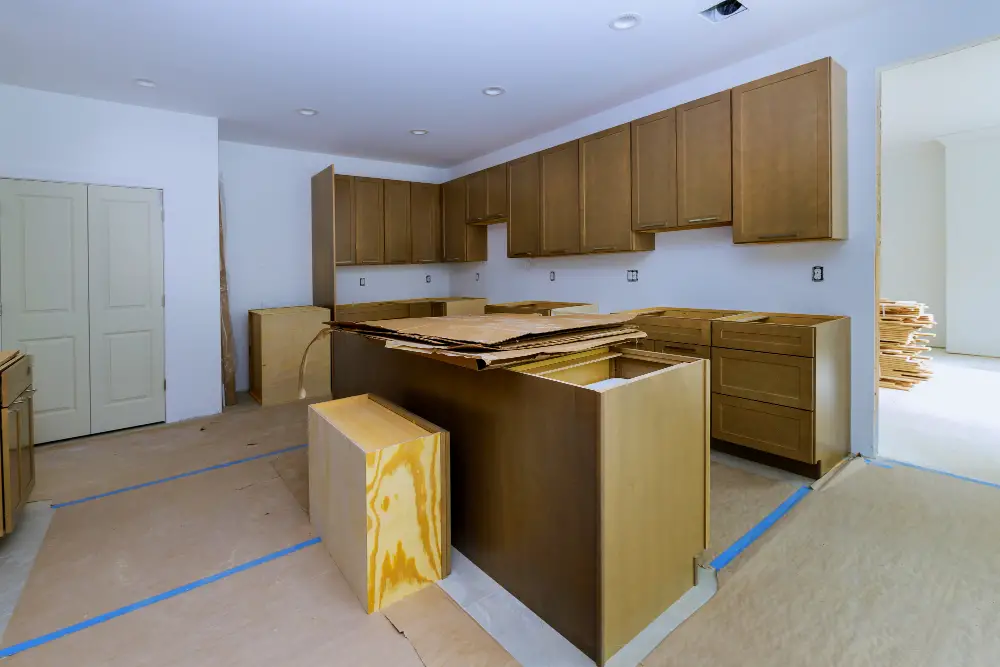
When it comes to updating both flooring and cabinets, there are several things you should consider. First, think about the style you want for your kitchen.
Do you prefer a modern or traditional look? This will help guide your choices for both flooring and cabinetry.
If you’re planning on replacing both cabinets and floors, it’s important to decide which one should be done first. In general, experts recommend installing new floors before new cabinets so that any potential damage during installation won’t affect the finished product.
When choosing materials for kitchen renovations, keep in mind that hardwood is always a popular choice due to its durability and timeless appeal. However, if budget is an issue or if moisture levels in your kitchen tend to be high (such as near sinks), other options like tile or vinyl may be more practical.
Hardwood Flooring and Cabinet Refinishing Options
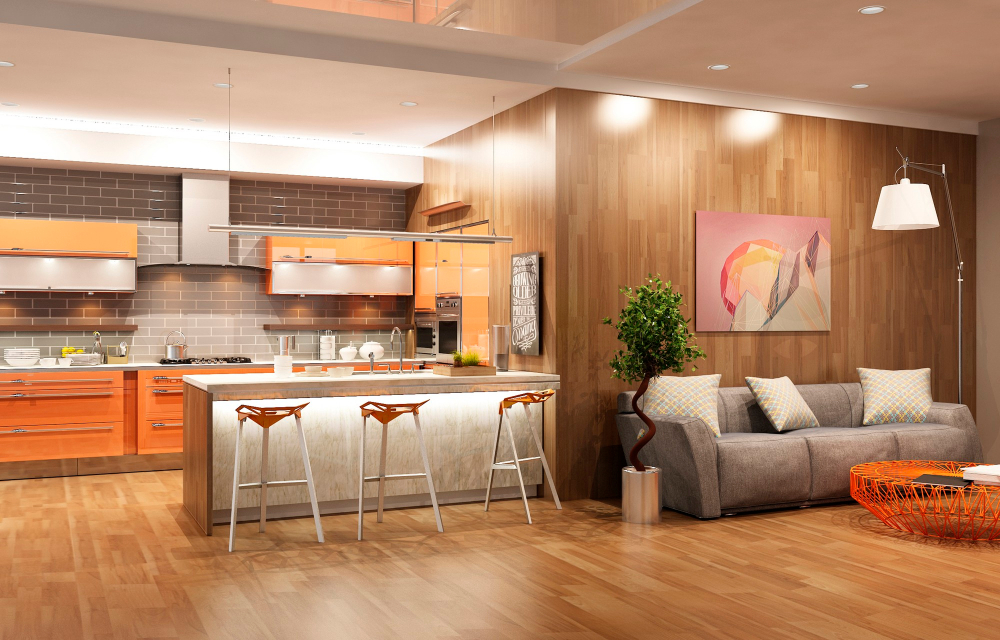
Refinishing cabinets can be a great way to update the look of your kitchen without breaking the bank on a full renovation. However, if you have hardwood flooring under those cabinets, it’s essential that you choose a cabinet finish that complements or matches the color and style of your existing floors.
One option is to refinish both at once for an entirely new look in one fell swoop. This approach allows homeowners to create an entirely fresh aesthetic by selecting complementary colors and finishes for their cabinetry and flooring.
Another option is simply refinishing one element while leaving another untouched. For example, if you love your current hardwood floor but want updated cabinetry, consider painting or staining just the cabinet doors while leaving everything else as-is.
Refinishing Hardwood Floors With Kitchen Cabinets in Place
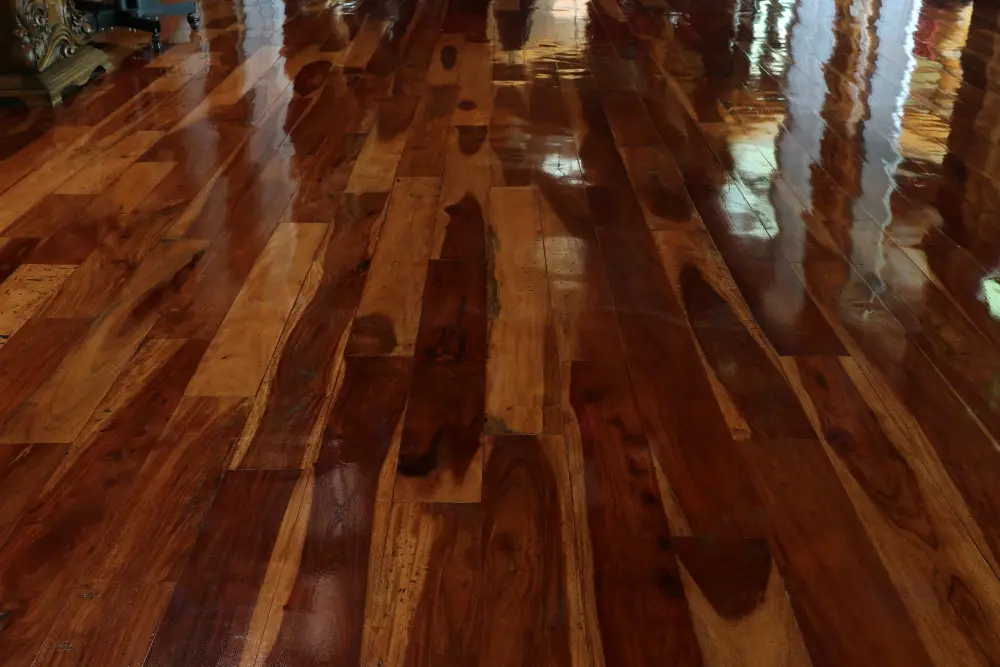
The process can be complicated if you have cabinets in place. Refinishing hardwood floors with kitchen cabinets in place requires careful planning and execution to avoid damaging your cabinetry.
One option for refinishing hardwood floors with cabinets in place is sandless refinishing. This method involves using special equipment that scuffs up the existing finish on the floor without removing any wood or creating dust.
The new finish is then applied over the old one, resulting in a refreshed appearance without disturbing your cabinetry.
Another option for refinishing hardwood floors with kitchen cabinets already installed is to hire professionals who specialize in this type of work. They will use specialized tools and techniques that allow them to refinish around your cabinetry while protecting it from damage.
If you’re considering refinishing your kitchen’s hardwood flooring but don’t want to remove or disturb existing cabinet installations, there are options available that can help achieve beautiful results while keeping everything intact!
FAQ
Does flooring go underneath kitchen cabinets?
In most cases, flooring does not go underneath kitchen cabinets; instead, it is cut to fit and installed around them.
Why don’t you put flooring under kitchen cabinets?
Flooring is not put under kitchen cabinets to allow wood floors to contract and expand with temperature changes and moisture fluctuations, preventing buckling and damage.
Do wood cabinets go with wood floors?
Yes, wood cabinets can go with wood floors, as long as they complement each other in color and material, rather than being an exact match.
Should you install kitchen before or after flooring?
It is generally recommended to install kitchen flooring after installing cabinetry to help reduce costs and create a cleaner look.
What are the advantages and disadvantages of placing hardwood floors under kitchen cabinets?
Advantages and disadvantages of placing hardwood floors under kitchen cabinets include easier flooring installation and potential future updates, but increased material costs and possibly affecting the cabinet height.
How does the type of flooring affect the installation process for kitchen cabinets?
The type of flooring affects the installation process for kitchen cabinets by influencing the required height adjustments, surface preparations, and structural support needed for a successful installation.
Which factors should be considered when deciding whether to install hardwood floors before or after kitchen cabinets?
When deciding whether to install hardwood floors before or after kitchen cabinets, consider factors such as convenience for installation, potential flooring damage, space for adjustments, and overall project costs.




